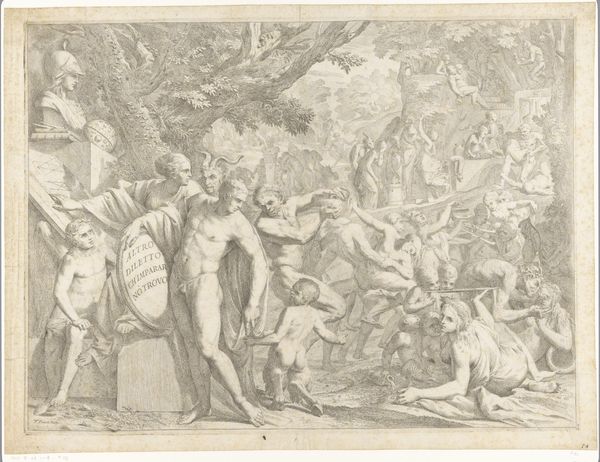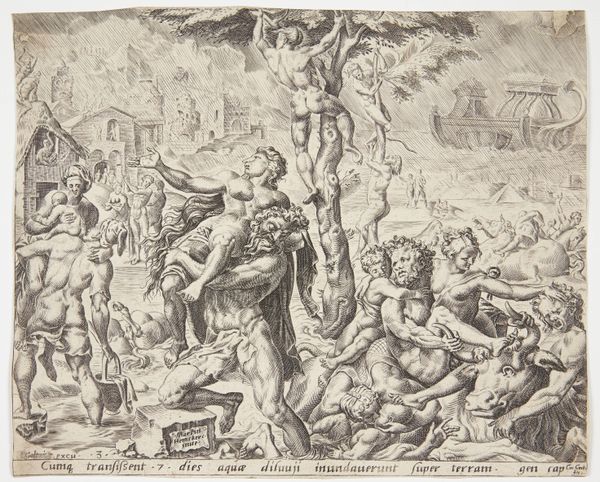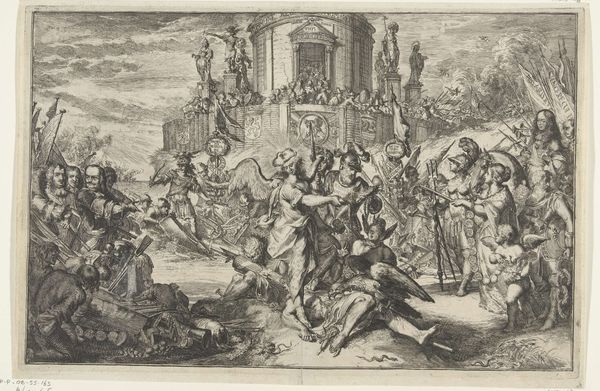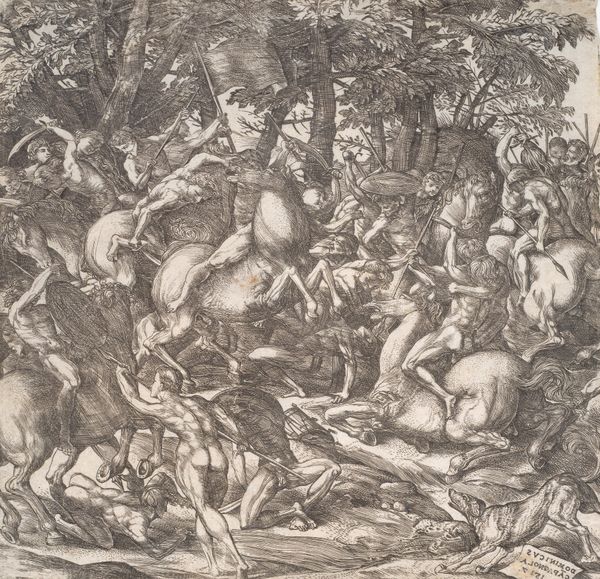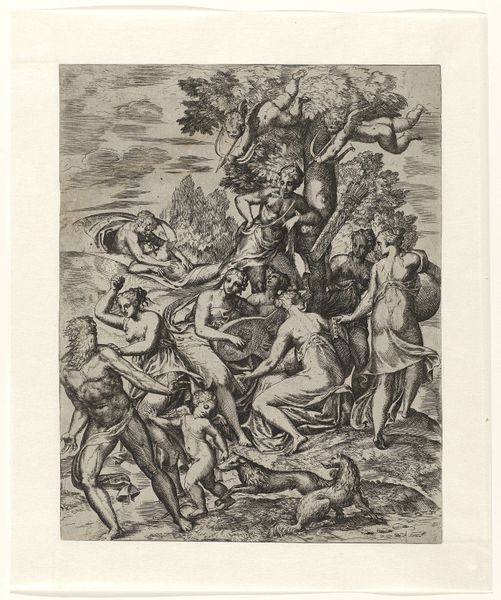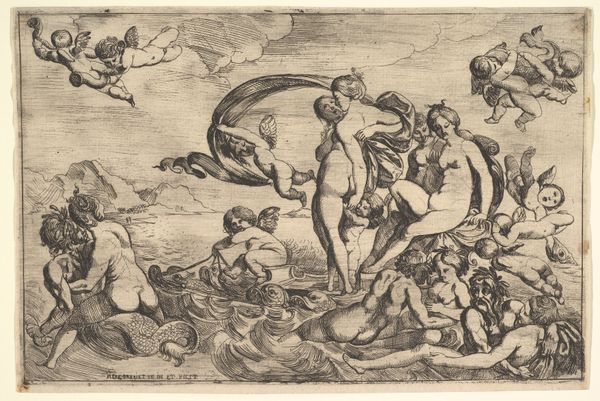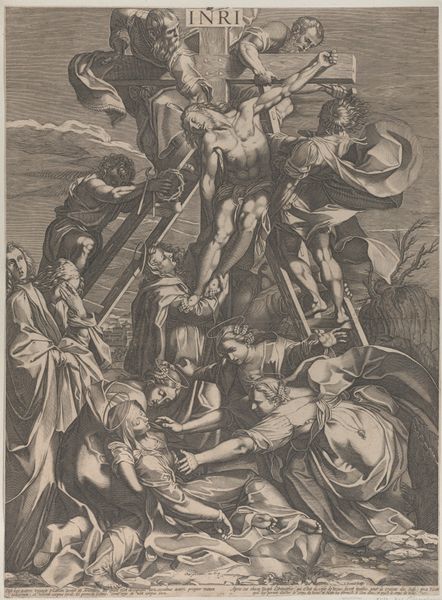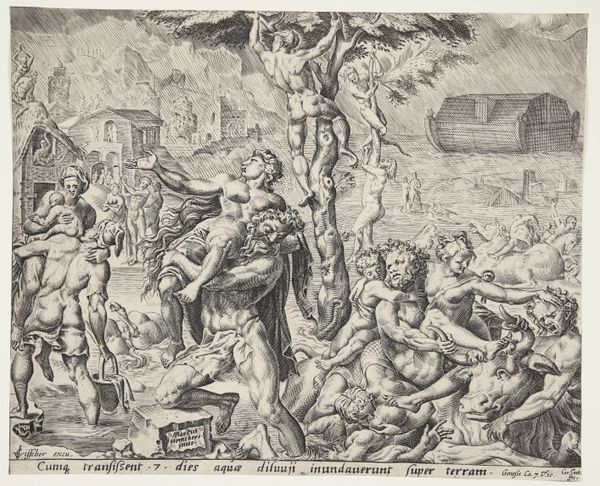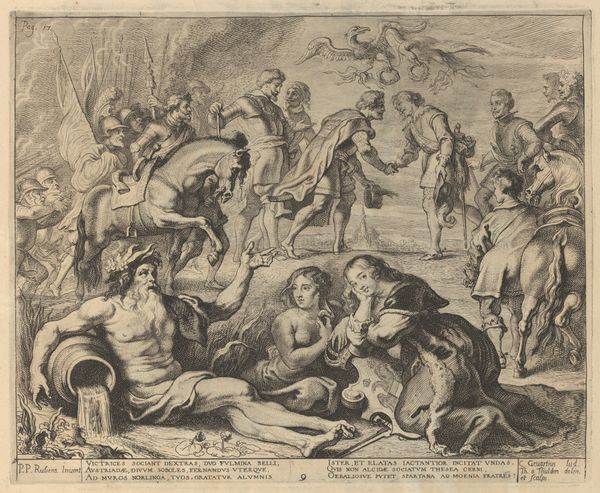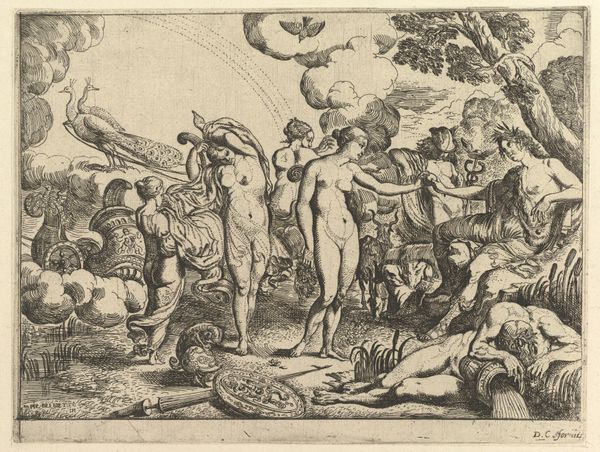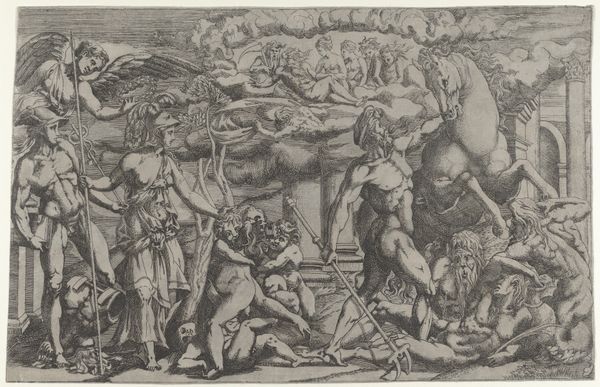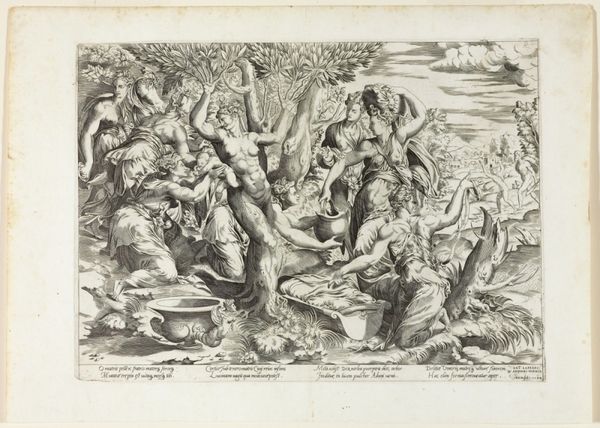
drawing, print, ink, engraving
#
drawing
#
ink drawing
#
allegory
#
baroque
#
pen drawing
# print
#
figuration
#
ink
#
history-painting
#
nude
#
engraving
Copyright: National Gallery of Art: CC0 1.0
Pietro Testa etched ‘Parnassus’ sometime in the mid-17th century, a period of profound artistic and intellectual ferment in Italy. Testa’s print depicts the mythological mountain home of Apollo and the Muses, a gathering place for the arts and sciences. This idealized vision reflects the cultural aspirations of the Roman elite. The institutions of art and learning had a critical role in shaping social values and projecting power. ‘Parnassus’ embodies this ambition, drawing on classical imagery to legitimize contemporary culture. Made during the Baroque era, this artwork reveals the period's fascination with classical antiquity and the desire to emulate its achievements. The Roman Catholic Church was a dominant patron of the arts, commissioning works that promoted its religious and political agenda. But artists like Testa also sought independent recognition, navigating a complex social landscape of academies, workshops, and private clients. To fully understand ‘Parnassus,’ we might consult period literature, archival records, and the artist’s biography. These resources shed light on the social conditions that shaped its creation and reception.
Comments
No comments
Be the first to comment and join the conversation on the ultimate creative platform.
